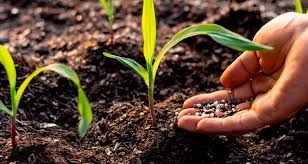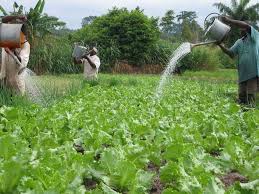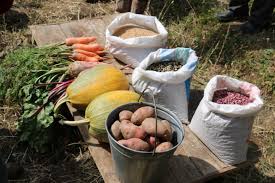Subsistence farming is a type of agriculture where farmers grow food primarily to feed themselves and their families. Unlike commercial farming, which aims to produce surplus crops for sale in the market, subsistence farming focuses on self-sufficiency.
Farmers cultivate a variety of crops and sometimes raise animals to ensure they have enough food for daily living. This method of farming is common in many developing countries, where access to resources and technology may be limited.
Importance of Subsistence Farming
Subsistence farming plays a crucial role in many communities around the world. Here are several key reasons why it is important:
1. Food Security: Subsistence farming provides families with a stable source of food, ensuring they have enough to eat year-round. This self-reliance reduces dependence on market fluctuations and food imports.
2. Economic Stability: By growing their own food, families can save money and avoid purchasing expensive food from stores. This economic benefit is particularly important in low-income areas where cash flow is limited.
3. Cultural Preservation: Subsistence farming often involves traditional farming practices and crops specific to a region. This helps preserve local cultures and farming techniques passed down through generations.
4. Biodiversity: Subsistence farmers often cultivate a diverse range of crops, which can enhance biodiversity. This diversity helps maintain healthy ecosystems and can contribute to soil fertility and resilience against pests and diseases.
5. Environmental Benefits: Small-scale farming practices are often more sustainable. Subsistence farmers may use organic methods, avoid chemical fertilizers, and practice crop rotation, promoting soil health and reducing environmental impact.
Key Characteristics of Subsistence Farming
Understanding the key characteristics of subsistence farming can help in recognizing its significance and challenges:
1. Small Scale: Subsistence farms are typically small, often just a few acres. This scale allows farmers to focus on meeting their family’s needs rather than producing for sale.
2. Diverse Crops: Farmers grow a variety of crops to ensure a balanced diet. This diversity can include grains, vegetables, fruits, and legumes, tailored to local conditions and family preferences.
3. Limited Use of Technology: Subsistence farming often relies on traditional farming methods and minimal technology. Farmers may use simple tools, such as hoes and hand plows, instead of advanced machinery.
4. Low Input Costs: Subsistence farmers usually have low input costs since they rely on their own labor and local resources. They often use natural fertilizers, such as compost or manure, and practice crop rotation to enhance soil fertility.
5. Focus on Family Needs: The primary goal of subsistence farming is to provide enough food for the farmer’s family. Any surplus may be sold or traded, but the main focus remains on self-sufficiency.
Types of Subsistence Farming

There are different types of subsistence farming, each tailored to specific environmental conditions and cultural practices. Here are some common types:
1. Shifting Cultivation: This method involves clearing a piece of land, growing crops for a few years, and then moving to a new area once soil fertility decreases. This practice is common in tropical regions.
2. Intensive Subsistence Farming: In this type, farmers use small plots of land but apply significant labor and resources to maximize yields. It often includes multiple cropping cycles throughout the year.
3. Pastoralism: Pastoralists raise livestock and move with their herds in search of grazing land and water. This type of subsistence farming is common in arid regions.
4. Mixed Farming: This approach combines crop cultivation and animal husbandry on the same farm. Farmers grow crops for food and feed livestock, providing a diverse source of nutrition and income.
5. Nomadic Farming: Nomadic farmers move frequently to find fresh pastures for their animals. This type of farming is often practiced in areas with harsh climates.
Choosing the Right Crops for Your Family
Choosing the right crops is essential for successful subsistence farming. Here are steps to guide you in selecting suitable crops for your family:
1. Assess Your Climate and Soil Conditions: Understand your region’s climate (Are there distinct seasons? Is it rainy or dry?) and test your soil to determine its fertility and nutrient content. Healthy soil is vital for good crop yields.
2. Identify Family Nutritional Needs: Consider your family’s dietary preferences and nutritional needs to ensure you choose crops that provide essential nutrients such as carbohydrates, proteins, vitamins, and minerals.
3. Select Drought-Resistant Varieties: Choose crop varieties that can withstand local conditions, particularly if water availability is an issue. Drought-resistant varieties can help ensure successful yields during dry spells.
4. Consider Local Market Demand: If you anticipate selling or trading surplus produce, think about crops that are popular or in demand in your local market.
5. Rotate Crops for Soil Health: Practice crop rotation by alternating the types of crops grown in your fields. This technique helps maintain soil fertility and reduces pest and disease issues.
6. Start Small and Experiment: Begin with a few crop types and expand as you gain experience. Experimenting with different crops can help you identify which varieties thrive best in your conditions.
Read Also: Best Number of Ruminant Animals per Housing Unit for Fattening
Soil Preparation and Fertility Management

Soil preparation and fertility management are crucial for successful subsistence farming. Here are steps to follow:
1. Test the Soil: Before planting, conduct a soil test to assess pH, nutrient levels, and organic matter content. This will help you understand what amendments are needed.
2. Improve Soil Structure: Use organic matter, such as compost or well-rotted manure, to enhance soil structure. This improves water retention and aeration, promoting healthy root development.
3. Add Fertilizers Wisely: Based on soil test results, apply natural fertilizers like bone meal or green manure. Avoid chemical fertilizers as they can harm the soil ecosystem.
4. Practice Crop Rotation: Rotate different crops each year to prevent nutrient depletion and reduce pests. This helps maintain soil fertility and encourages a diverse ecosystem.
5. Cover Cropping: Plant cover crops during off-seasons. These crops prevent soil erosion, suppress weeds, and enhance soil fertility when they are turned into the soil.
Planting Techniques for Successful Harvests
The right planting techniques can significantly affect crop yields. Follow these guidelines:
1. Timing: Plant crops at the right time based on seasonal weather patterns. This ensures that plants grow in optimal conditions.
2. Proper Spacing: Space plants according to their growth needs. Adequate spacing allows for air circulation and reduces competition for nutrients.
3. Depth of Planting: Plant seeds at the recommended depth for each crop. This ensures good seed-to-soil contact and promotes healthy germination.
4. Direct Seeding vs. Transplanting: Decide whether to direct seed or transplant seedlings based on the crop type. Some crops grow better when started indoors and transplanted later.
5. Watering After Planting: Water newly planted seeds and seedlings gently to avoid disturbing the soil. Ensure consistent moisture without overwatering.
Read Also: Common Rabbit Diseases and How to Cure them
Water Management in Subsistence Farming

Effective water management is essential for successful crops. Here are some strategies:
1. Understand Water Needs: Research the water requirements for each crop you grow. Different plants have varying moisture needs.
2. Implement Rainwater Harvesting: Collect rainwater in barrels or tanks during the rainy season. This provides an additional water source during dry periods.
3. Use Mulching: Apply organic mulch around plants to retain soil moisture, suppress weeds, and regulate soil temperature.
4. Drip Irrigation: Consider using a drip irrigation system, which delivers water directly to the plant roots. This method conserves water and reduces evaporation.
5. Monitor Soil Moisture: Regularly check soil moisture levels. Adjust watering schedules based on rainfall and soil condition to avoid overwatering or drought stress.
Pest and Disease Management
Managing pests and diseases is vital for healthy crops. Here are steps to follow:
1. Regular Monitoring: Check crops regularly for signs of pests and diseases. Early detection is key to effective management.
2. Use Natural Remedies: Employ natural pest control methods, such as introducing beneficial insects (like ladybugs) or using neem oil to deter pests.
3. Crop Rotation: Rotate crops annually to disrupt pest life cycles and reduce the risk of diseases.
4. Healthy Soil Practices: Maintain healthy soil through composting and organic matter additions. Healthy plants are more resilient to pests and diseases.
5. Remove Infected Plants: If you spot infected plants, remove them immediately to prevent the spread of disease.
Harvesting and Post-Harvest Practices

Proper harvesting and post-harvest management are essential for preserving crop quality. Here’s how to do it:
1. Harvest at the Right Time: Pick crops at their peak ripeness for the best flavor and nutrition. Each crop has its ideal harvesting time.
2. Use Proper Techniques: Harvest carefully to avoid damaging plants and fruits. Use clean tools to prevent contamination.
3. Clean and Sort Produce: After harvesting, clean the produce to remove dirt and pests. Sort items by size and quality for better storage.
4. Store Correctly: Store harvested crops in a cool, dry place to prolong shelf life. Some crops may require refrigeration, while others can be stored at room temperature.
5. Preserve Surplus Produce: Consider preserving excess produce through canning, drying, or freezing to ensure food availability throughout the year.
Nutrition and Food Security
Ensuring good nutrition is vital for families practicing subsistence farming. Here are steps to enhance food security:
1. Diversify Crops: Grow a variety of crops to provide a balanced diet rich in vitamins, minerals, and proteins.
2. Plan Meals Around Available Produce: Base your family’s meals on what is currently harvested to minimize food waste and maximize nutrition.
3. Educate on Nutritional Needs: Learn about essential nutrients and how to meet dietary requirements using available crops.
4. Involve the Community: Share knowledge and resources with neighboring farmers. Collaborating can help improve overall food security in the community.
5. Monitor Family Health: Keep track of your family’s health and nutrition. Adjust crop choices and dietary practices as needed to address any deficiencies.
Subsistence farming is a vital practice for many communities around the world, providing food security, economic stability, and cultural heritage. By understanding the principles of subsistence farming, including soil preparation, crop selection, water management, and pest control, you can successfully cultivate a productive farm that meets your family’s needs. With careful planning and sustainable practices, subsistence farming can thrive, ensuring a reliable food source for generations to come.
Do you have any questions, suggestions, or contributions? If so, please feel free to use the comment box below to share your thoughts. We also encourage you to kindly share this information with others who might benefit from it. Since we can’t reach everyone at once, we truly appreciate your help in spreading the word. Thank you so much for your support and for sharing!





